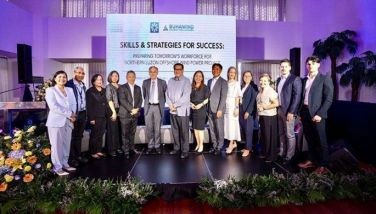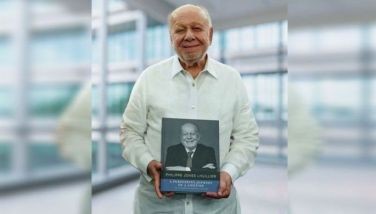Where’s the money to lick poverty?

June 11, 2001 | 12:00am
 Days after the May 1 assault on Malacañang, social workers trooped to 22 slums from where most of those arrested came. Armed with survey questionnaires, they expected more to verify what they already knew than stumble on anything new. What do the urban-poor need most, they asked thousands of respondents. Some said they were fans of jailed ex-President Joseph Estrada, a few acknowledged Gloria M. Arroyo’s ascendancy, most didn’t care who was in power. All invariably said, "Give me a job, quick," followed by "I’d like eventually to own the lot I’m squatting on." But there was a constant heart-breaker: "Hush, can I trouble you with one request? My kids are sick. Do you happen to have food with you?"
Days after the May 1 assault on Malacañang, social workers trooped to 22 slums from where most of those arrested came. Armed with survey questionnaires, they expected more to verify what they already knew than stumble on anything new. What do the urban-poor need most, they asked thousands of respondents. Some said they were fans of jailed ex-President Joseph Estrada, a few acknowledged Gloria M. Arroyo’s ascendancy, most didn’t care who was in power. All invariably said, "Give me a job, quick," followed by "I’d like eventually to own the lot I’m squatting on." But there was a constant heart-breaker: "Hush, can I trouble you with one request? My kids are sick. Do you happen to have food with you?"
Even the poorest of the poor find it undignified, un-Filipino perhaps, to beg for food. Hunger, after all, can be sated by a few morsels, scavenged from garbage most likely, followed by big gulps of water from the artesian well. But not for days on end, not if all the neighbors are as desperate.
Although used to seeing poverty, Undersecretary Veronica Fenix-Villavicencio found the slum immersion alarming. She’d been a student activist helping the homeless in the ’80s, an NGO worker dealing with woodcutters in the ’90s. Now with the National Anti-Poverty Commission, Veronica’s voice cracked as she recounted the whispered entreaties of the masa in this promising new millennium. "More than five million don’t have jobs, a third of them in Metro Manila," she said as she fought back her tears, "they are hungry and need medicine, nutrition . . ."
There are many more things the poor need. A study that Veronica helped prepare with NAPC Secretary Ging Deles says it all about access to basic needs of the poorest 40 percent of households:
• pregnant women with iodine supplements, 52.8 percent;
• pregnant women with iron supplements, 59 percent;
• access to family planning services, 89.1 percent;
• access to safe drinking water, 69.1 percent;
• availment of public housing program, 2.9 percent;
• access to sanitary toilet, 67.7 percent;
• access to electricity, 47.3 percent;
• family head gainfully employed, 57.6 percent;
• with children aged 6-12 years in school, 82.1 percent;
• with children aged 13-16 in school, 45 percent;
• with working children, 20 percent.
Behind the stark statistics are the harsh realities of life not only in slums but also on hillside and coastal villages where more of the poor dwell. Almost half of mothers and infants aren’t getting enough chances to survive. Close to a third of families fall prone to floods yet have no water to drink or latrines. Almost half have no jobs, and thus have no money for as basic a need as electricity. Children are dropping out after elementary school, not to work for lack of skills but to bum around with no money for fare or food to go on to high school. Hardly anybody lives in the few mass houses that government has built.
Knowing how acute the problem is, Social Welfare Secretary Dinky Soliman is shifting her department’s meager funds into food aid. Health Secretary Manuel Dayrit has mobilized more medical missions and basic drugs that his office can afford. The housing agencies under Secretary Mike Defensor and the Urban-Poor Commission are working on ways to bring down the cost of mass houses from P500,000 to P80,000. Sure, they all believe they should not just give a hungry man fish, but teach him how to fish so he won’t go hungry again. But teaching takes time. So does making fishing implements. In the meantime, the man’s tummy is grumbling. Can mentor and student take time out for snacks? A plan is to expand to other regions an earlier experiment in Bicol of giving school children a bag of rice to bring home at the end of classes.
Other agencies are rechanneling resources for quick employment. With the help of private foundations, Environment Secretary Heherson Alvarez is contemplating on recruiting tens of thousands to plant fruit trees along highways. Philippine National Oil Company president Thelmo Cunanan also has ordered tree-planting around government-operated mines and exploration sites. The board of the subsidiary PNOC Coal Corp. has decided to buy more coal from camote (small-scale) miners, and at higher prices.
Ultimately, though, the poser arises: Where to get more to replenish funds for emergency employment. Re-elected Senator Frank Drilon believes the administration will have to bite the bullet and borrow from abroad. It’s a risk, but close to full employment, even if on emergency mode, can jumpstart the economy enough to entice new investors. Rep. Joe de Venecia, the only aspirant for Speaker who has so far presented an economic agenda, adds that a New Deal-type of emergency employment is the first step to his Plan 747, that is, seven percent growth for seven years.
The academe sees results not in foreign loans but in aid. Ed Morato, dean of the Asian Institute of Management, believes that Mrs. Arroyo’s credentials as an economist, coupled with her physical attributes, put her in a unique position to seek help even from donor-fatigued governments. "Even the ongoing Abu Sayyaf crisis can be cited as example and used to highlight the poverty in the countryside," he points out.
Cunanan says there’s enough government money lying around in bank deposits to match foreign aid, as donors require. Such aid can generate more emergency jobs.
Ed Olaguer, also from AIM, advocates a more radical approach. Now is the time, he says, for finance officials to seek debt forgiveness or at least a moratorium on payments. He laments that government pays a billion pesos a day in debts – money that can otherwise go into pro-poor, anti-poverty programs.
Prof. Elfren S. Cruz, one-time chief of President Cory Aquino’s Malacañang staff, offers other details. Now with La Salle Graduate School of Business, he says senators and congressmen should spend their usual P15-billion-a-year pork on emergency jobs in their respective locales. Another P15 billion can be raised from Pagcor, the charity sweepstakes and the President’s Social Fund to create 300,000 new jobs to clean esteros, dredge rivers or plant trees. "Economists will claim that this kind of employment is nonproductive," Cruz argues, "but the funds are anyway being wasted, so why not use it to help the poor gain purchasing power which will help our domestic economy." He also advocates buying Filipino products and tax incentives for companies that will help employ the unemployable. Call his ideas fascist or communist, Cruz dares as he recalls the very words used at the start of the New Deal of US President Franklin Delano Roosevelt. So long as the more than five million get jobs, he doesn’t care about labels.
BrandSpace Articles
<
>
- Latest
- Trending
Trending
Latest
Trending
Recommended

November 22, 2024 - 5:17pm

November 22, 2024 - 12:20pm

November 21, 2024 - 11:16pm




























